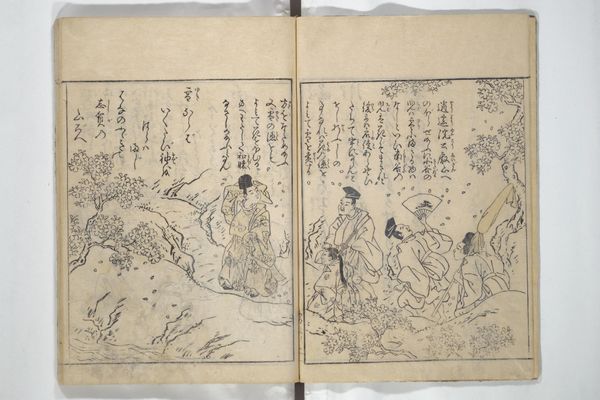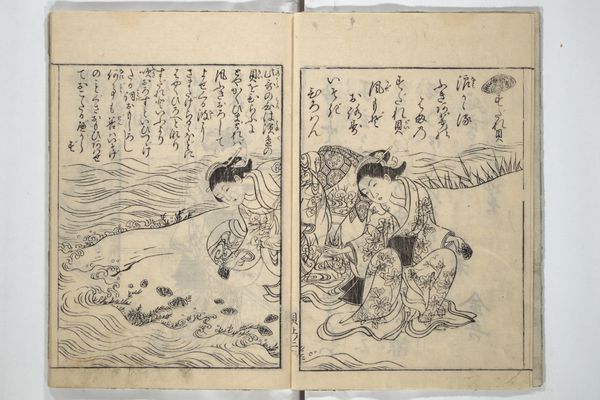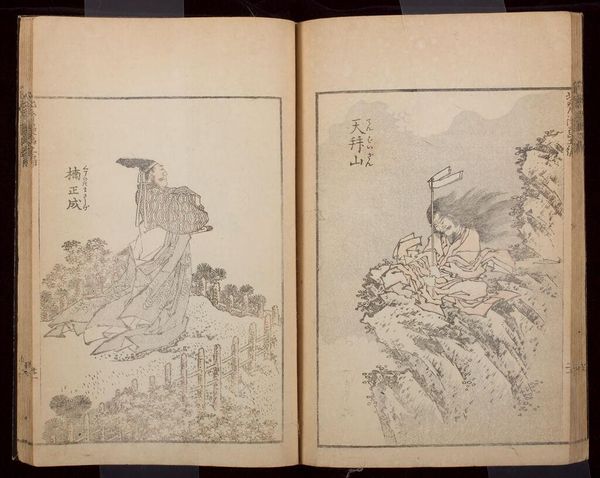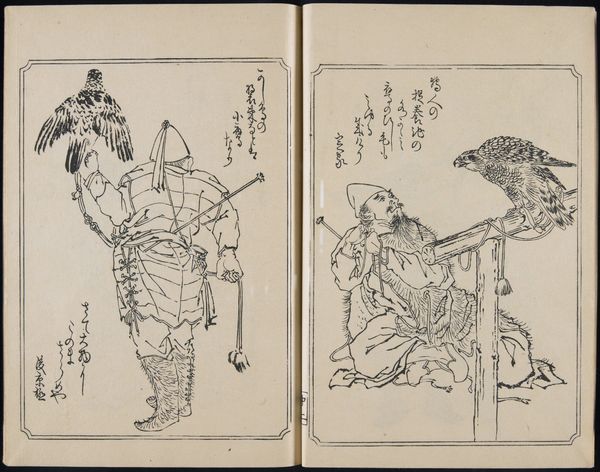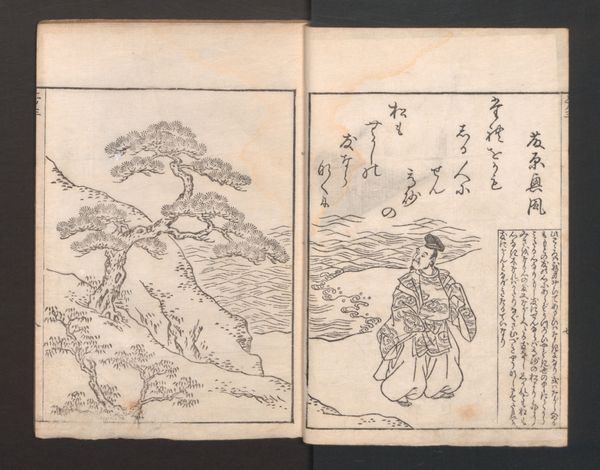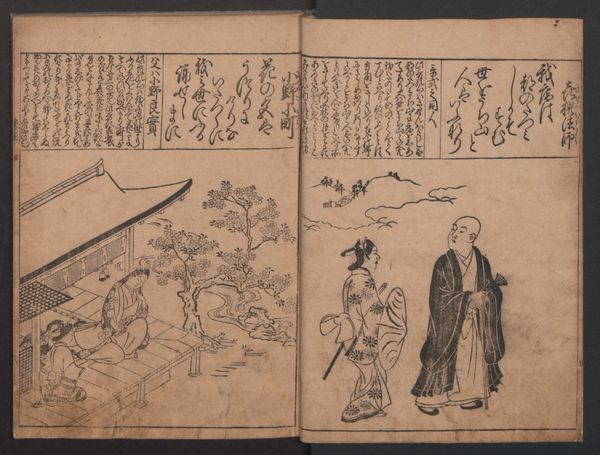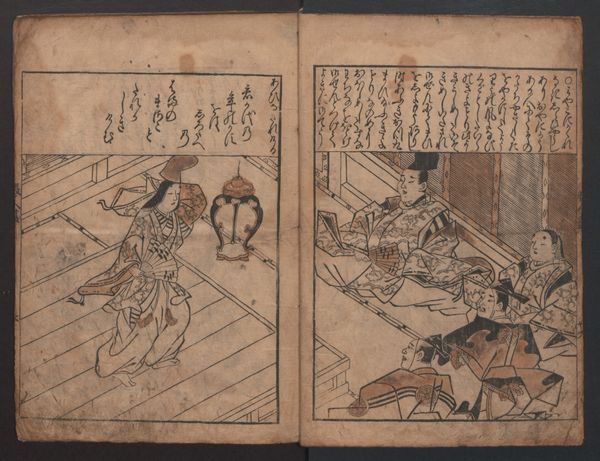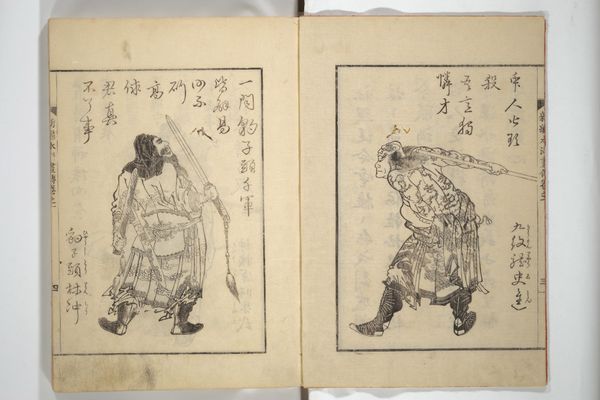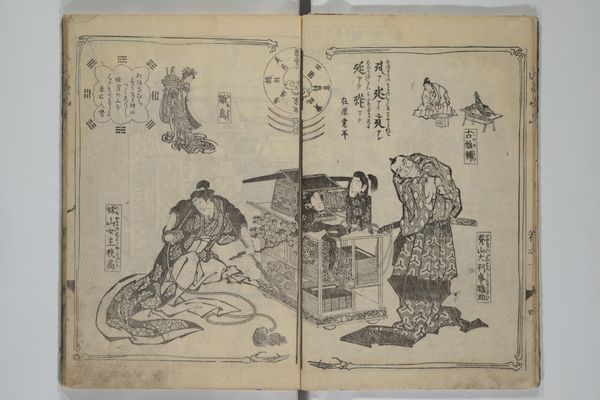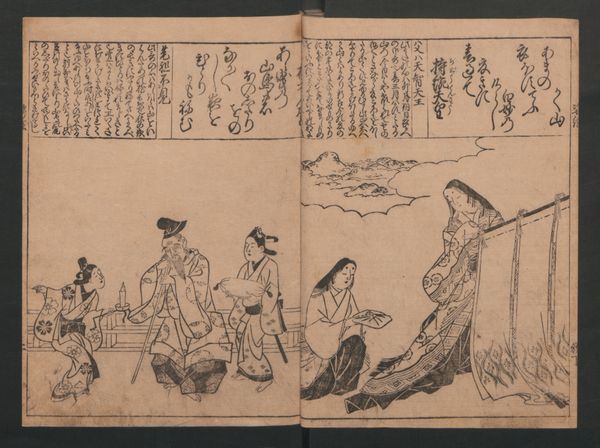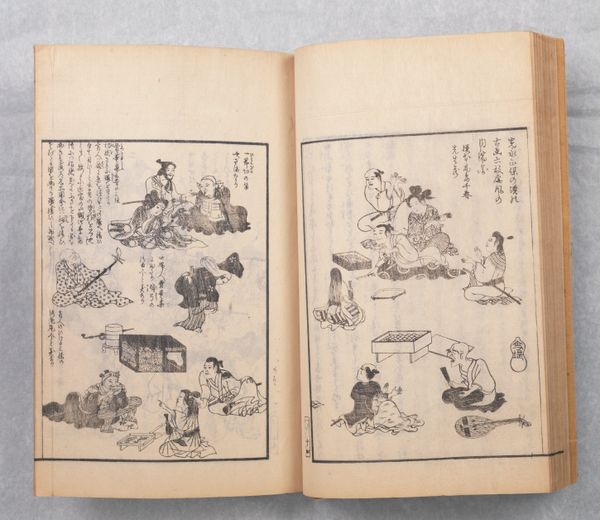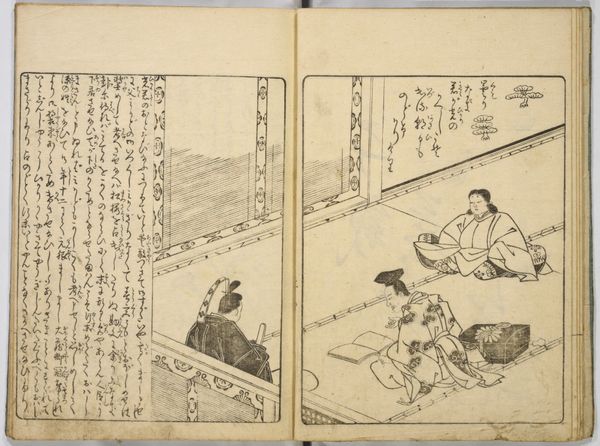
drawing, paper, ink
#
drawing
#
narrative-art
#
asian-art
#
landscape
#
ukiyo-e
#
figuration
#
paper
#
ink
Dimensions: 6 1/4 × 4 5/16 in. (15.8 × 11 cm)
Copyright: Public Domain
This woodblock-printed book, created by Shimokōbe Shūsui around 1797, depicts scenes related to cranes and their symbolic significance in Japanese culture. The crane, or "tsuru," appears prominently as a symbol of longevity and good fortune. Notice how it interacts with human figures, emphasizing a harmonious relationship between nature and humanity. This echoes ancient myths where cranes were believed to carry souls to paradise. The presence of children alongside the crane could allude to themes of innocence, purity, and familial continuity. These motifs recur throughout history in various cultural contexts. Consider, for instance, the ancient Greek depictions of birds as messengers of the gods, or the Egyptian reverence for the heron, associated with the sun god Ra and creation. These connections reveal how certain archetypal symbols transcend cultural boundaries, tapping into shared human experiences and desires. The crane continues to resurface, evolving from religious symbols to more secular representations of peace and hope.
Comments
No comments
Be the first to comment and join the conversation on the ultimate creative platform.

